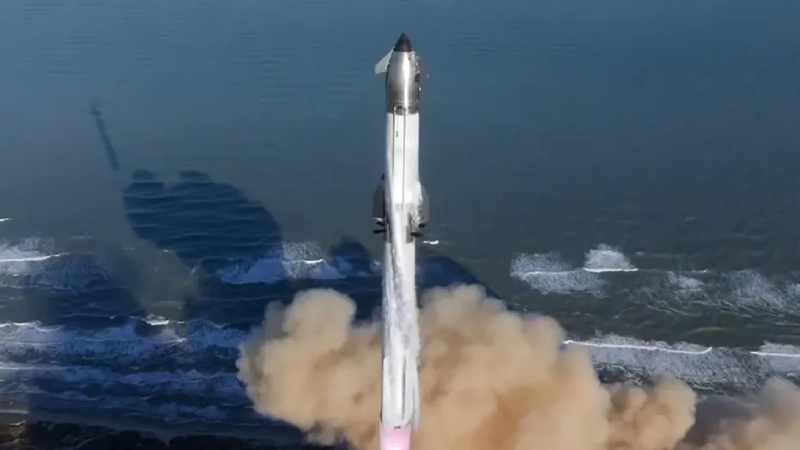SpaceX Starship Explodes in Second Failed Test, Repeat History

SpaceX launched the Starship megarocket system on Thursday night for its eighth integrated test flight. Regretfully, the Starship vehicle was lost during the mission, just like in the January test that failed. The upper stage (S34) successfully launched from Starbase in Boca Chica, Texas, but was unable to regulate its spin before losing contact and disintegrating, sending debris back to Earth. This year’s second Starship explosion underscores the continued difficulties in the rocket’s development.
At 5:30 p.m. CT (6:30 p.m. ET), the uncrewed SpaceX Starship test flight took off from SpaceX’s Starbase facility in South Texas. Elon Musk, the CEO of SpaceX, explained that the business had cancelled their Monday launch attempt because there were “too many question marks,” which resulted in a scrub.
A “significant number” of tiles were removed to stress-test vulnerable areas; different metallic tile options were tested to determine which would protect the ship during reentry; non-structural versions of Starship’s catch fittings were tested to determine the thermal performance of the fittings; and a section of the tile line was smoothed and tapered to address hot spots observed during reentry on the sixth flight test.
Upgraded avionics, such as a more potent flight computer, better power and network distribution, and integrated smart batteries, were features of the Super Heavy booster.
In order to coordinate recovery and cleanup activities, SpaceX contacted the Turks and Caicos administration right once and collaborated with the United Kingdom.
In addition to aiming for goals not accomplished in the previous test, such as Starship’s maiden payload deployment and many reentry tests focused on returning the upper stage to the launch site for recovery, Thursday’s flight followed the same suborbital trajectory as earlier missions.
Why did the SpaceX Starship Explode?
The accident on Thursday is the second setback for the business run by billionaire and unofficial presidential aide Elon Musk, and it occurs nearly two months after a similar occurrence.
Around 6:30 p.m. local time (2330 GMT), the 403-foot (123-meter) rocket lifted off from the SpaceX Boca Chica site in Texas.
The booster separated and flew back to Earth, where it was intercepted by a crane in midair during the successful first stage of the trip.
However, as several engines cut off, the Starship’s upper section started to spin.
Musk’s ambition to accelerate the program in 2025 was pushed back after both tests this year failed at phases that had been passed by previous testing.
After around eight minutes, the January launch exploded, sending debris raining down on multiple Caribbean islands and slightly damaging a car in the Turks and Caicos Islands.
The Starship program is a crucial component of Musk’s goal to take people to Mars by the end of the decade.


